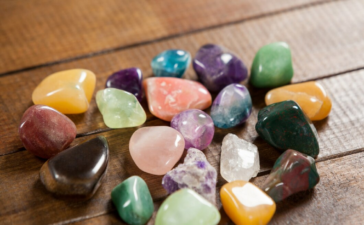The symbolism associated with flowers has evolved over time and across cultures. Some of the oldest depictions of humans associating flowers with particular feelings and personality traits come from the Maya people and the ancient Egyptians. Some flowers still carry the meanings given to them hundreds of years ago, continuing the tradition. Flower Delivery Kuala Lumpur compiled a list of several often encountered flower types, their contemporary meanings, and the well-known tales that have left indelible marks on our current perception of them. Our sincere wish is that these anecdotes and associations will enrich the next occasion you buy, donate, or receive flowers.
- Amaryllis represents dignity, charm, affection, and resolve. The Greek roots of the name Amaryllis provide much of the flower’s significance. The name “Amaryllis” originates in the Greek language amaro, which means “to sparkle,” and the flower itself has ties to Greek mythology. Legend has it that the Amaryllis bloomed from the tears of a young woman who gave her life for the love of a shepherd.
- Daisy: The epitome of innocence, goodness, and virtue. The Norse god Freyja (god of love, growth, and war) and the Virgin Mary are both linked to the daisy in mythology and folklore. A goddess named Belides from Roman mythology transformed into a flowering daisy to avoid the pursuit of a god.
- Daffodil, for love and esteem that goes unrequited. Daffodils are called Narcissus in Latin. The mythical son of the goddess of rivers Cephissus, Narcissus, is said to be the inspiration for the flower’s name. One version of the myth states that Narcissus stared at his reflection in a pool of water until he drowned.
- Hyacinths symbolise active recreation and fun. The hyacinth as a whole is associated with joy and merriment, yet the specific color has its significance. A young man named Hyakinthos inspired the naming of this flower. According to Greek legend, Apollo taught a young kid how to throw a discus, and the boy was tragically killed in the process.
- Lily: Love and pregnancy. Lilies were sacred to Ishtar, the goddess of love and battle in Mesopotamian religion. Virgin Mary is also associated with the lily because of depictions of Gabriel, the archangel presenting her with lilies.
- Muscari: Remembering and feeling for you. Muscari, being a subspecies of Hyacinth, shares the same symbolic import as the Hyakinthos myth.
- Rose, is a symbol of adoration and feminine grace. Roses, like hyacinths, have diverse meanings depending on their color. The ancient Romans said Venus and her son Cupid were responsible for the emergence of the red rose, whereas the ancient Greeks believed Aphrodite, their deity of love, was responsible.
- Tulips symbolize unwavering love and flawlessness. These are perfect as happy birthday flowers. Tulip symbolism originates in Persian mythology, specifically the story of Farhad & Shirin. After learning that the girl he had feelings for, Shirin, had passed away, a young prince named Farhad made the ultimate sacrifice. The tulip blossomed from his sacrifice’s blood.









